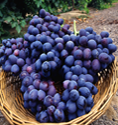Mink PJ, Scrafford CG, Barraj LM, Harnack L, Hong CP, Nettleton JA, Jacobs DR Jr.
Exponent, Inc, Washington, DC 20036, USA.
Background: Dietary flavonoids may have beneficial cardiovasculareffects in human populations, but epidemiologic study resultshave not been conclusive.
Objective: We used flavonoid food composition data from 3 recentlyavailable US Department of Agriculture databases to improveestimates of dietary flavonoid intake and to evaluate the associationbetween flavonoid intake and cardiovascular disease (CVD) mortality.
Design: Study participants were 34 489 postmenopausal womenin the Iowa Women's Health Study who were free of CVD and hadcomplete food-frequency questionnaire information at baseline.Intakes of total flavonoids and 7 subclasses were categorizedinto quintiles, and food sources were grouped into frequencycategories. Proportional hazards rate ratios (RR) were computedfor CVD, coronary heart disease (CHD), stroke, and total mortalityafter 16 y of follow-up.
Results: After multivariate adjustment, significant inverseassociations were observed between anthocyanidins and CHD, CVD,and total mortality [RR (95% CI) for any versus no intake: 0.88(0.78, 0.99), 0.91 (0.83, 0.99), and 0.90 (0.86, 0.95)]; betweenflavanones and CHD [RR for highest quintile versus lowest: 0.78(0.65, 0.94)]; and between flavones and total mortality [RRfor highest quintile versus lowest: 0.88 (0.82, 0.96)]. No associationwas found between flavonoid intake and stroke mortality. Individualflavonoid-rich foods associated with significant mortality reductionincluded bran (added to foods; associated with stroke and CVD);apples or pears or both and red wine (associated with CHD andCVD); grapefruit (associated with CHD); strawberries (associatedwith CVD); and chocolate (associated with CVD).
Conclusion: Dietary intakes of flavanones, anthocyanidins, and certain foods rich in flavonoids were associated with reduced risk of death due to CHD, CVD, and all causes.
PMID: 17344514. Am J Clin Nutr. 2007 Mar;85(3):895-909.



